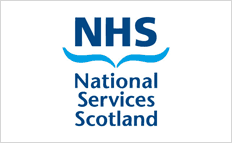Vitamin E
In plasma, vitamin E is associated with lipoproteins and is present mainly in the form of α-tocopherol which is also of most relevance nutritionally. Its main function is as an antioxidant e.g. protecting unsaturated fatty acids against free radical mediated oxidation and so maintaining the integrity of cell membranes, and possibly protecting against cardiovascular disease by preventing LDL oxidation. It may also protect against some cancers. The prevalence of cardiovascular disease is lower in those individuals whose dietary intake of vitamin E is higher. However, supplementation studies have failed to demonstrate protection from heart attacks or decreased death rate in patients with heart disease. Similarly the prevalence of breast and lung cancer is not reduced when vitamin E is given. The activity of vitamin E is lost when it neutralises a free radical, but it can be regenerated by vitamin C. In this way vitamins E and C act synergistically to reduce lipid peroxidation.
Deficiency and Toxicity
Deficiency of vitamin E may result in neurological disease manifested by irritability, oedema, impaired co-ordination and balance, muscle weakness and haemolytic anaemia. The haemolytic anaemia reflects a shortened lifespan of red blood cells with fragile membranes.67 Deficiency is unusual except in long term TPN, low birth weight and premature infants and cases of lipid malabsorption, such as cystic fibrosis, chronic cholestatic liver disease and abetalipoproteinaemia.
Vitamin E has been generally regarded as non-toxic until intake is very high when the risk of haemorrhage is increased. However, recent evidence suggests that long term use of vitamin E in doses exceeding 400 mg/day causes increased all-cause mortality in patients with existing chronic disease.84
Assessment of status
Vitamin E is stored mainly in the adipose tissue. Plasma α-tocopherol is the main form of circulating vitamin E, but is bound to lipoproteins meaning that its concentration is affected by the cholesterol concentration. The best marker of vitamin E status, therefore, is the plasma α-tocopherol to cholesterol ratio. Work done by STEMDRL shows that the acute phase response can cause a reduction in plasma α-tocopherol concentration of up to 30% in patients 48 hours after undergoing elective surgery for knee arthroplasty (see Table).68 This fall is, however, paralleled by a decrease in cholesterol concentration. The systemic inflammatory response, therefore, does not affect the α-tocopherol to cholesterol ratio.68
A normal plasma α-tocopherol to cholesterol ratio does not necessarily reflect adequate whole body vitamin E stores, as plasma vitamin E concentrations do not start to fall until whole body stores have been significantly depleted. Once whole body vitamin E stores are depleted the plasma α-tocopherol to cholesterol is a good marker of status.
Recommended Daily Allowance
Adults: 15 mg/day
Effect of Systemic Inflammatory Response on Plasma Vitamin E Concentrations
Table: Baseline, peak/ trough and day 7 concentrations of CRP, α-tocopherol, cholesterol and α-tocopherol/cholesterol ratio following elective surgery for knee arthroplasty (n = 20).68
|
Baseline values (0 h) |
Peak/trough (48 h) |
Final values (168 h) |
Friedman (0–168 h) |
|
| C-reactive protein (mg/L) | <6 (<6–16) | 150 (69–255) | 31 (<6–134) | <0.001 |
| α-tocopherol (μmol/L) | 30 (19–45) | 21 (13–36) | 27 (15–39) | <0.001 |
| Cholesterol (mmol/l) | 5.5 (4.5–7.0) | 4.2 (3.0–5.8) | 4.6 (3.6–6.7) | <0.001 |
|
α-tocopherol/cholesterol (μmol/mmol) |
5.6 (4.0-8.9) | 5.8 (4.2-8.0) | 5.7 (3.8-8.1) | 0.137 |
Sample Requirements and Reference Ranges for Vitamin E
| Sample Type | Plasma/serum or whole blood* |
|---|---|
| Container | Lithium heparin (non-gel), EDTA or plain clotted sample. |
| Precautions | Light-sensitive; wrap in tin foil. Send by first class post within 72 hours of collection. If delivery to Glasgow is outwith 72 hours, separate sample and store plasma frozen until sending and then send by first class post (not on ice or dry ice). |
| Minimum volume** | 500 µL plasma/serum or 1 mL whole blood (this is sufficient for vitamins A and K to be analysed on the same sample). |
| Reference range |
3.5 to 9.5 μmol/mmol cholesterol (STEMDRL derived) < 2.5 μmol/mmol cholesterol (associated with increased risk of clinical deficiency) |
| Turnaround time | See this page for STEMDRL TAT targets |
| Method | UPLC with UV detection (In-house method)70 |
| Traceability | Traceable to National Institute of Standards and Technology (NIST) standard reference material. |
| Intermediate Precision (CV) | See this page for latest data |
| Measurement Uncertainty, U | See this page for latest data |
| Analytical Goals (CV) | See this page for latest data |
| EQA Scheme | UK NEQAS, Birmingham (once per month); INSTAND scheme, Düsseldorf, Germany (four times per year). |
| Included in UKAS scope? | Yes |
* Ideally a fasting sample should be collected, especially if the patient is receiving oral or parenteral vitamin E supplementation. If this is not possible, sample should be taken at least 8 hours post treatment for patients receiving oral supplementation or TPN.
**Absolute minimum volume; this volume is insufficient to carry out repeat analysis if analysis fails.

